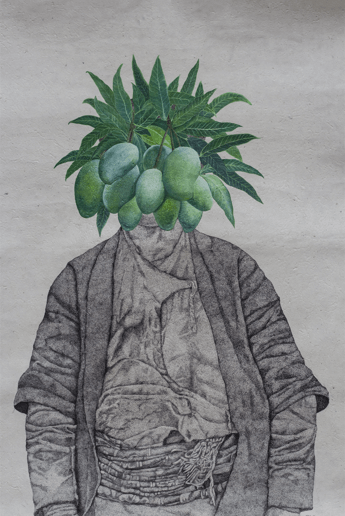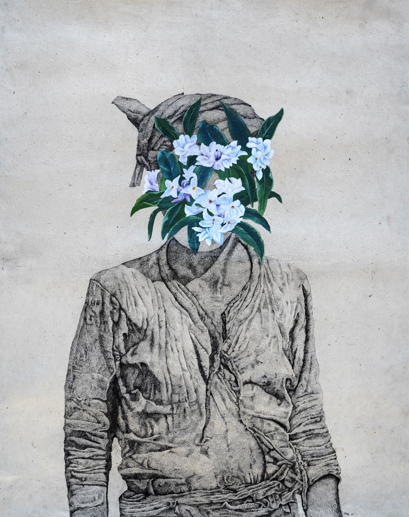SUBAS
TAMANG
Courtesy of the artist, Kumudini Gurung Shrestha, and Prabal Gurung

Hailing from the Tamsaling land of Nepal, Subas Tamang seeks to develop a deeper understanding of the present-day conditions of his Tamang community through his work, by closely exploring their fraught and complex histories. This is particularly important to the artist, as ancestral knowledge has primarily been passed down through oral traditions and narration, often left unrecorded in other forms.
Tamang’s works in the Triennale reference rakams, which were decrees issued in the 19th and 20th centuries to command villagers living in the areas surrounding Kathmandu to work for elites in the valley. This form of state-imposed servitude had profound consequences for the cultural and societal fabric of the Tamang peoples. At times, they were ordered to keep their lands fallow and were required to provide unpaid labour to produce various goods for the Rana-led bureaucracy.
The 'baigani rakam' forced Tamangs, particularly those farming mangoes, to work on royal orchards. Similarly, the 'kagaji rakam' required many families to produce paper out of Lokta (Daphne), a fowering shrub that only grows in high altitudes. Remnants of certain mango orchards survive to this day along the banks of the Trishuli River.

Location Map

Designed & Developed by: Curves n' Colors | Visual identity by: Wkshps
